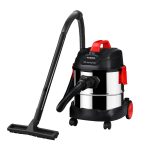Last Updated on May 20, 2024 by Jawad Ali
Plywood is a material (wood) created from thin layers or “plies” of wood veneer that are bonded together with adjacent layers having their wood grain rotated up to 90 degrees to one another. This process creates a material that is known as “plywood.” Plywood is a kind of plywood. Plywood, in its most basic form, is produced by adhering thin layers of wood called veneers to one another to form a flat sheet.
Process
Plywood pieces may take on a variety of shapes, each of which corresponds to a certain application. For construction purposes, plywood, for instance, is often pressed into big flat sheets before being used. It is shaped into curves if it is going to be used for building furniture, aeroplanes, or boats, or if it is going to be utilized in any of these applications. Each ply layer has its grain running at angles to the other layers. Because of this, the layer can maintain its strength and durability, and it also reduces the likelihood that it will shrink. Plywood comprises at least three layers of different types of wood that are laminated together and kept together with glue.
Back and face is the terms used to refer to the two exposed sides of the plywood. In most cases, the section that cannot be seen is the back, and the area that can be seen is the front, often known as the face. The layer located in the centre is known as the core, and any further layers located internally are referred to as crossbands if there are five or more plies employed.
Material
The components that are utilized in the production of plywood have a significant impact on the manufacturing process. Both softwoods and hardwoods may be used in the manufacturing process of plywood. It is also possible for it to be made up of a combination of the two materials. Plywood may be made from various softwoods, including cedar, pine, redwood, and spruce; however, Douglas fir is the softwood most often utilized. Oak, mahogany, teek, maple, or ash are the most frequent hardwood used to construct plywood. Particle board or solid timber will be used to construct the core of the composite plywood. When the project demands exceptionally thick sheets, composite plywood is often employed as the material of choice.
When putting together a sheet of plywood, one of many different kinds of glue may be used to adhere the individual layers of wood to one another. The application of the plywood determines the kind that is utilized. For instance, if the sheets are going to be used outside a building, a phenol-formaldehyde resin will be used as the adhesive. This is because the glue is robust and resistant to any damage caused by moisture. This trait is essential for any project that will be carried out outside.
Suppose the plywood is going to be used inside a building. In that case, the glue utilized is often either manufactured from a protein derived from soybeans or from blood. Nevertheless, many of these interior plywood sheets will often employ the same phenol-formaldehyde resin used for external plywood sheets. This change was made to save costs. In conclusion, a urea-formaldehyde resin is often employed to make the glue when plywood is used in furniture construction.
In addition to the standard components, plywood may also be made from various materials. For instance, the back or face of the plywood, or occasionally both sides, may need to have a layer of metal, plastic, paper, or fabric glued to it for a particular project to be successful. This contributes to the sheet having more excellent resistance to moisture as a result. The construction, agriculture, and transportation sectors are the most common users of a kind of plywood known as overlay plywood. This plywood may also be used for other purposes.
It is also possible to apply a coat of liquid stain on plywood to give it a more polished finish, which is useful for more ornamental projects. In conclusion, plywood may be treated with many chemicals to produce various quality results. It is possible, for instance, to treat it so that it is more resistant to fires or deterioration.
Classification
The classification drills demonstrate how plywood is manufactured. In general, plywood may be divided into two categories, each with its own method for grading the material. The two categories are hardwood for ornamental purposes and building materials for industrial use. Because of their superior tensile properties, plywoods that fall into the construction and industrial categories are often used.
They get a rating based not only on their exposure capacity but also on the quality of the veneer used on both the back and the front of the surface. This exposure capacity may be on the inside or the outside, typically determined by the kind of glue employed. D, C, B, A, and N are the possible grades of veneer that fall under this categorization. The D grade is the lowest and contains several flaws, while the N grade has very few problems and is the highest possible rating. Plywood used as subflooring often has a rating between C and D, which is a good rule of thumb to follow.
The second kind of plywood, hardwood/decorative, is chosen for its application due to its overall appealing aesthetic. The capacity of the plywood to withstand moisture will determine the grade that it receives in this category. Given that it is utilized for cosmetic reasons, the face of this plywood is usually never found to have any flaws. Type III, Type II, Tile I, and Technical make up the different grading levels.
Sizes
Plywood comes in a very wide variety of thicknesses and dimensions. The thickness may vary from 0.6 inches all the way up to 3 inches. However, the consistency that is most usually utilized is somewhere in the range of 0.25 inches to 0.75 inches. Any veneer must have the same thickness on both the back and the face.
Because plywood has universal qualities, it is suitable for nearly any construction or decorating project. Get in touch with Curtis Lumber & Plywood for further details. If you want more information or are still interested in learning how plywood is manufactured.


























